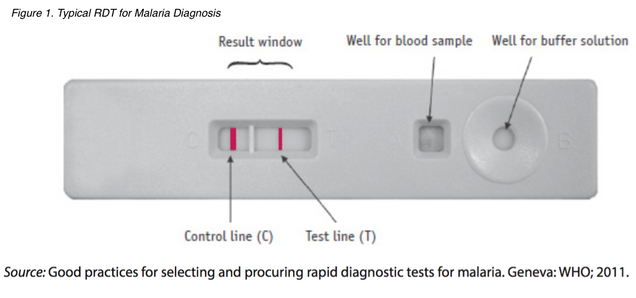Malaria Detection with Rapid Diagnostic Tests (RDTs)
Malaria detection and treatment methodologies vary over the landscape of affected populations. The current gold standard for confirmation of malaria is microscopic examination. In this technique, a blood smear is stained and examined for the presence of a malaria parasite. A thick smear is examined for the presence of malaria parasites and a thin smear is examined for determination of the species of malaria. With this technique, the desired information can be obtained within a few hours of collecting a blood sample and further action can be taken to treat the patient.
While microscopic examination remains the ‘gold standard’ for malaria detection, there exists a variety of Rapid Diagnostic Tests (RDTs) that provide results within minutes of use as well. Most RDTs are lateral flow tests that work by obtaining a small blood sample, usually through a finger prick. The blood sample is labelled with dye to detect parasite antigens, and then the presence of these antigens is revealed in a results window of the RDT cassette (Figure 1). A more detailed explanation of how RDTs work can be found here. The use of RDTs allow for more people of affected populations to be diagnosed in places where microscopy is not available. Diagnosis occurs on a much shorter timescale and physicians are able to treat more patients as a result.
While RDTs enable for more patients to be diagnosed, this technology does not yet replace microscopy as the standard for diagnosis. RDTs provide fast results by comparison to microscopy, but there is variation in the accuracy and ability over the landscape of brands that exist. In addition to this, there does not exist a universally accepted standard for quality control to ensure that all existing brands meet the necessary requirements for being effective. Systems have been put in place to address quality control, such as the WHO-FIND Malaria RDT Evaluation Programme, which give clinicians a standard by which to judge the quality of different RDTs. As there are many factors that can affect the performance of RDTs, such as storage and shelf life, there needs to be more improvement and better implementation of these quality control methods that in a practical manner.



